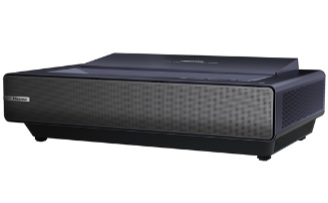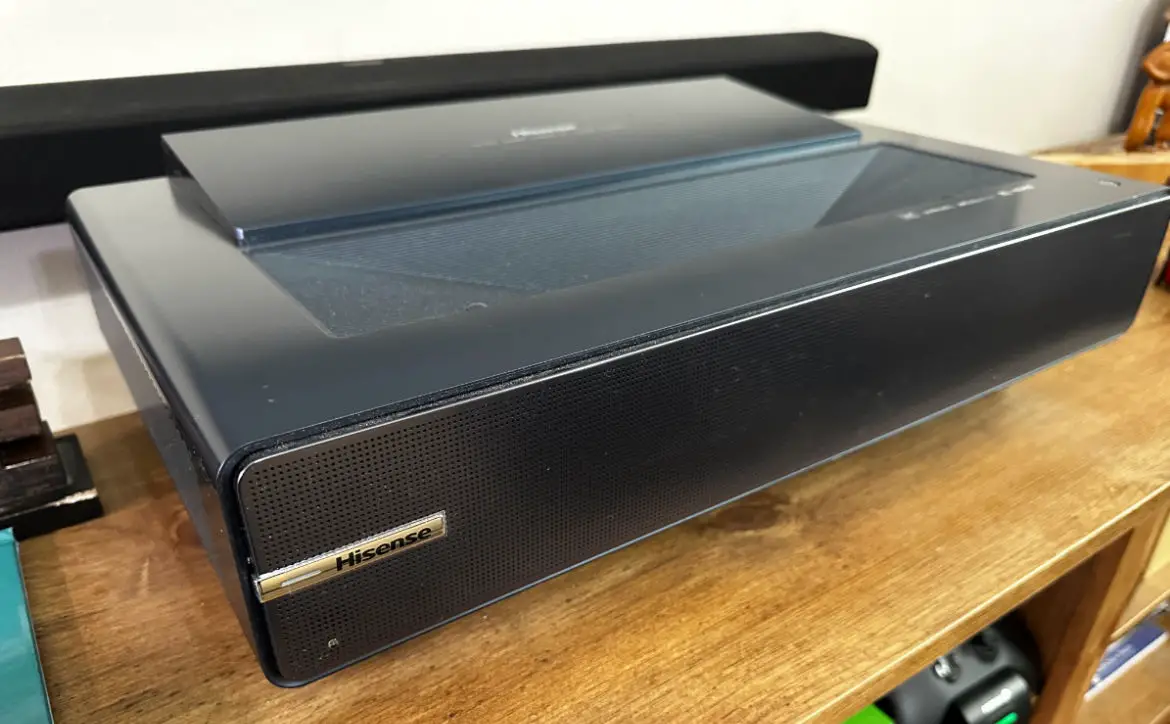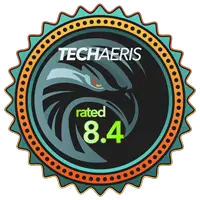
Projectors aren’t for everyone. There are multiple reasons for this, their cost is usually higher than a standard 4K TV and many projectors take special setup to use. But ultra-short throw projectors have at least one thing going for them, they can be set up just inches from any wall large enough for the image. The Hisense PX1 Laser UST isn’t the most spectacular ultra-short throw projector out there, but it does have an advantage in its price.
Estimated reading time: 14 minutes
While it’s still not as cheap as a basic 65″ 4K TV, it does offer up an affordable path to bringing a 100″ 4K projected image into your home without obliterating your bank account. Though it will leave a small dent in it. The Hisense PX1 Laser UST, I felt, is just a notch under the L9G I reviewed last year. But, while the PX1, in my opinion, was not as good as the L9G, it is still an excellent way to get into ultra-short throw projectors if you’re curious. Let’s get into the full review of the Hisense PX1 Laser UST.
Table of contents
The Quick Take
I’ll be up front here, short throw projectors are a new realm for me. The Hisense PX1 is only the second one I’ve had the pleasure of using for an extended amount of time. The Hisense L9G was the first short throw I reviewed, and I found that I really loved the results from that laser TV. So, most of my review of the Hisense PX1 is based on my use of the L9G.
That said, I found the PX1 to be a very nice short throw projector, but to my eyes, it falls under the L9G in both brightness, color, and sound. But that’s not a bad thing either, considering that the Hisense PX1 costs less money than the L9G. I wish I would have reviewed the PX1 before the L9G.
Still, I feel comfortable recommending the PX1 if your budget can’t reach the L9G price point. The PX1 Pro is also an option, though I can’t recommend it because I haven’t used it. But the Pro version of this projector is supposed to deliver better brightness and color.
There are a ton of short throw laser UST/projectors on the market, and I think the PX1 sits right in with the best of them at this price point. I don’t think most users will be disappointed with the PX1, but if you can afford to spend more, I would check on the Pro version or the L9G from Hisense.
Specifications
The Hisense PX1 has the following features and specifications:
Display Specifications
- Lumens: 2000
- Light Type: Laser Phosphor
- Lamp Life: 25,000 Hours
- Chipset: 0.47″ DLP x 1
- Throw Type: Ultra Short Throw
- Aspect Ratio: 93.7” x 20.3” x 5.8”16:9
Smart TV
- Smart TV: Yes, Android
- Google Assistant built-in: Yes
- Works with Alexa: Yes
- App Store: Yes (Google Play App Store)
Picture
- Resolution: 4K
- Resolution Type: Shift
- Native Resolution: 3840 × 2160
- Contrast Ratio: 1,000,000:1
- Color Gamut: 107% BT.2020
- HDR: HDR 10, Hybrid Log-Gamma (HLG), Dolby Vision
- Color Processing: 10-bit
- Supported Resolutions: 720p, 1080i, 1080p/60
Audio
- Built-in speakers: 15 Watts x 2
Power
- Audible Noise: 37.8 dB
- Power: 200 Watts 100V – 240V
Connectivity
- Inputs/Outputs:
- Audio Out – Mini Jack
- Audio Out – Optical
- HDMI 2.1 × 2
- Ethernet – RJ45
- USB x 2
- Ethernet: Yes
- Bluetooth: Yes
- Wi-Fi: yes
- Screen Share/Mirroring: Yes
Optical
- Screen Size: 99.68″ – 120.06″
- Throw Ratio: 0.25:1 (D:W)
- Throw Distance: 1.8′ – 2.2′
- Lens Shift: No
- Digital Keystone: Horizontal & Vertical
- Included Lens: Fixed focal, manual focus
- Focus: Motorized
- Digital Zoom: Yes
Additional Features
- Input Lag: 4K/60Hz: 34.1ms | 1080p/60Hz: 34.1ms
- Warranty: 2-year warranty
- UPC: 888143012926
Accessories
- Remote: Yes
- Quick Start Guide and User Manual: Quick Start Guide in the box (User Manual available online)
- Power Cord: Yes
Dimensions
- Weight (without stand): 20.3 lbs
- Size: 6.30″ x 20.50″ x 12.80″ (H × W × D)
What’s In The Box
- Hisense PX1
- Remote
- Power cable
- Adjustment tool
- Lens cleaning kit
- Microfiber cloth
- Clean Gloves
- Manuals and Documentation
Design
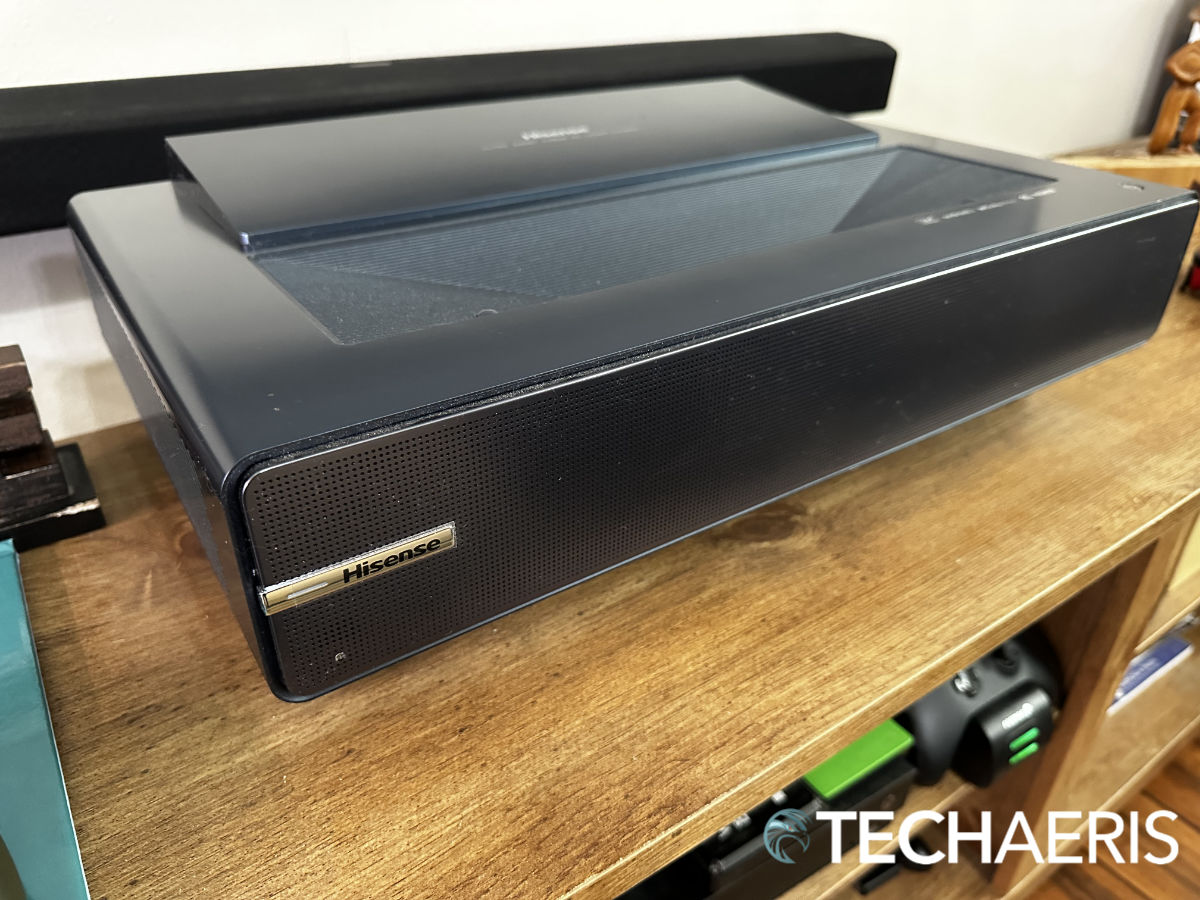
The Hisense PX1 is my second ultra-short-throw projector, so this is still new to me. I know that marketing calls this a laser UST, but it is basically a laser projector. I believe there is a general agreement that TVs are backlit glass displays, while projectors throw the image onto a screen or display. Who knows, I may be wrong, and there is probably someone somewhere who will inevitably correct me. For this review, we will call it the Hisense PX1.
The Hisense PX1 design is a bit more squared off compared to the L9G. Where the L9G was rounded and softer, the PX1 has sharper corners and a more boxy design. As with most short-throw projectors, the footprint of the Hisense PX1 is small, relative to something like a 65″ or larger TV. Since your wall, or projector is now the display, this frees up a lot of space and cleans up the entertainment stand a lot.
The unit is around 21lbs, so it is not heavy at all. It’s not large either, but you’ll need a stand at least 36″ wide, and my stand is significantly wider than 36″. The Hisense PX1 comes with four adjustable feet and a wrench to adjust them. More on that in the next section.
The unit is made up of several materials, including metal, plastics, and cloth. The front has a metal mesh covering (the speakers are behind this covering), a Hisense logo, and an LED power light. The right and left sides have vents for cooling, with the left side including one USB-A port. The top of the unit houses a small piece of glass behind which the laser sits.
The back of the Hisense PX1 is where you have most things happening. Here you’ll find the following; service port, serial port, LAN port, service one port, coax port, optical port, AUX port, HDMI 2 4K 120Hz, HDMI eARC 120Hz, and USB-A port.
Overall, the design of the PX1 is similar to its cousins. It’s lightweight and easy to place. The build quality is good, and the materials feel solid. I do wish there were two more HDMI ports, two HDMI ports aren’t enough for many users. Four should be the minimum for any TV or projector these days.
Display
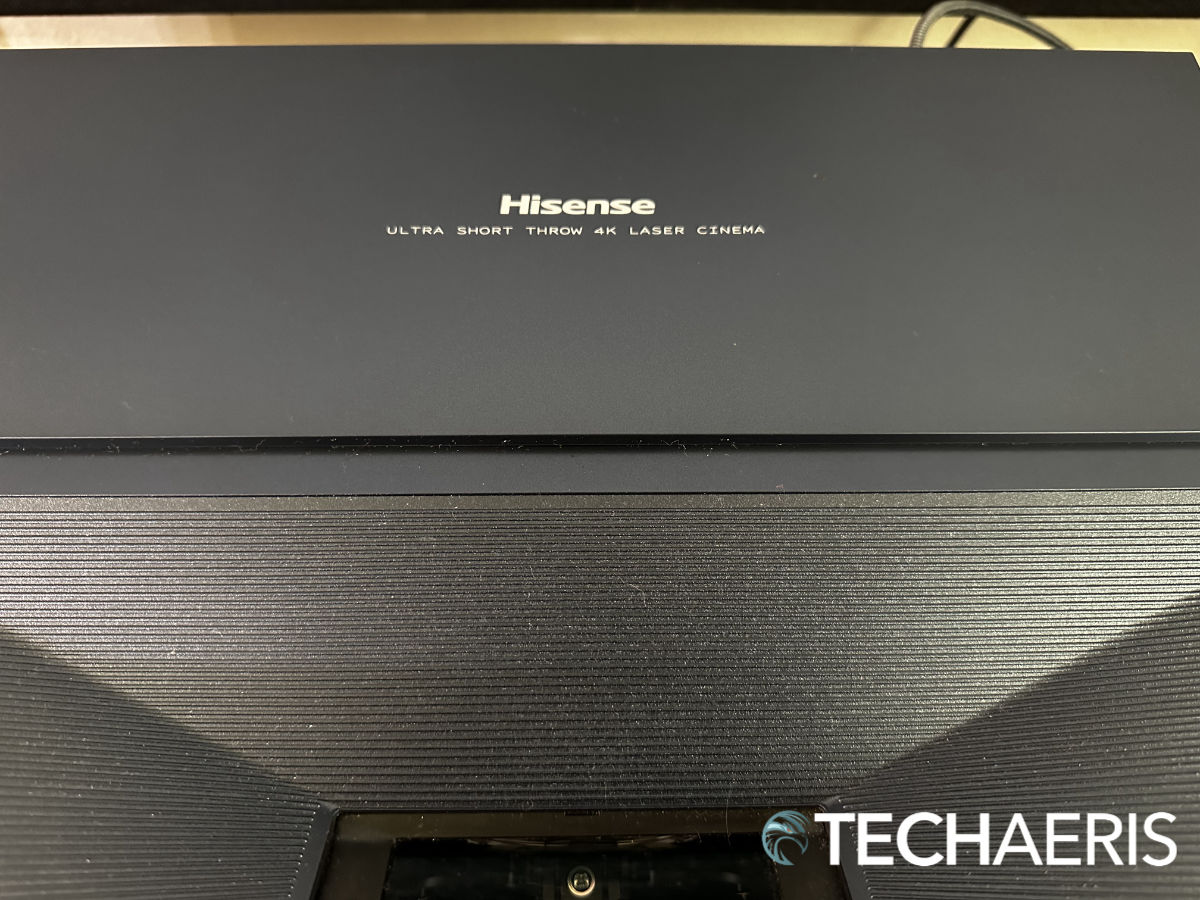
The Hisense PX1 can be used without a projector screen by simply pointing it at any wall. But you won’t get the best picture out of any projector doing it this way. You should really invest in an ALR projector screen, that’s what we used for testing.
Our ALR screen is 100″, but you can get a screen up to 120″. Check out our L9G review on how to set up an ALR screen and for more information on ALR screens in general. The Hisense PX1 does not come with an ALR screen, like the L9G did. But you can order one at the same time, prices vary, but don’t cheap out on this.
One of the major reasons people choose a projector over a TV is that you can get a significantly larger display area for a better price than a comparable TV. Though I will say that some manufacturers are making 75″ and 85″ TVs that are pretty damn good for comparable or cheaper prices. But most TVs stop around the 85″ mark, there are some that go to 100″, but those can get pretty difficult to manage and can cost a lot. But I digress.
As with any projector, the light source comes from the Hisense PX1 unit, and as much as I’d like it to be as bright as a TV, it is not. This is one major consideration you need to think about before buying a projector. The brightness of this display isn’t as good as L9G, it is significantly less bright and may struggle in very bright sunlit rooms. Ambient light is generally OK, but dark content may get washed out.
My experience with the PX1 is mostly the same as the L9G. The space we installed the screen in has ambient and direct sunlight coming into the room mid to late afternoon. It’s not a huge deal because we do not use the TV during those hours. Still, you can watch programs comfortably, but some darker content, such as movies, might suffer if too much light enters the room. In the case of the Hisense PX1, darker content suffers more than on the L9G.
Viewing angles are okay, not as good as the L9G, but get washed out the further off-axis you move. Viewing angles where it matters are good. The detail in 4K HDR10 is still good. Watching nature programs that feature close-ups of fur and feathers is a good way to see the detail it delivers. Though the detail here is not as good as a traditional backlit 4K TV.
The colors are clean and bright, not as vibrant as a QLED, OLED TV or even the L9G, but that is expected, given the light source. Blacks have the same story; they are dark but not as dark as a TV, again, expected and part of the experience. Whites are also good, and the story remains the same for these.
Overall, the display experience with the Hisense PX1 was satisfactory, but having used the L9G already, it does not stack up to it. Brightness is acceptable but could be better, colors are nice but lack the punch of the L9G, blacks are more grey than black, and whites are OK. It sounds like I’m really bashing the display experience here, I’m not. For the price point, you are getting a competitive short-throw projector.
My experience with the L9G has colored my expectations, making it hard to look completely past the shortcomings of the PX1. I think first time short-throw projector buyers and those upgrading from something less powerful will be thrilled with this projector’s display quality.
Setup
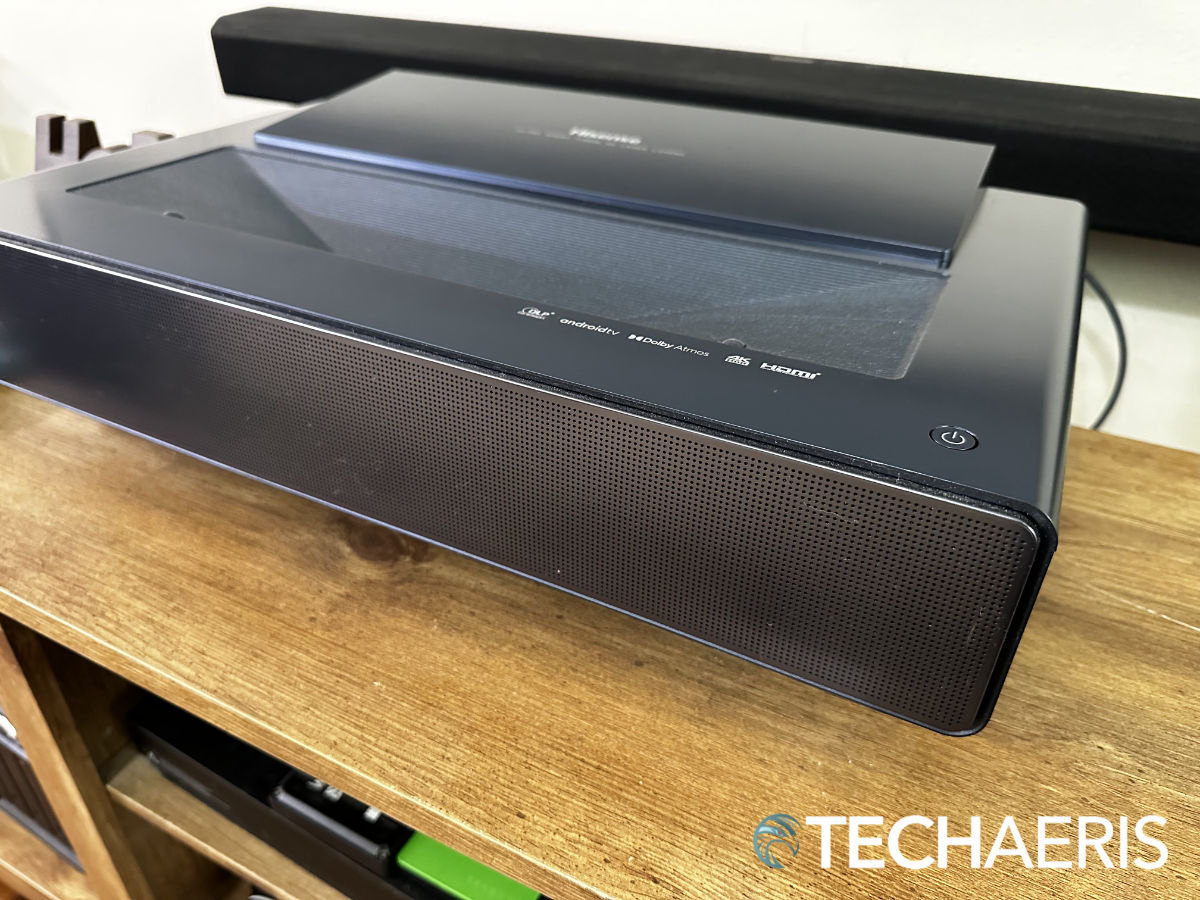
Because the Hisense PX1 is a fixed focal length designed for 100″ to 120″ screens, you must place the unit just right for the optimal picture. Hisense gives you the distances from the floor and up, from the wall and out, and how high the screen needs to be placed for the best results. Hisense has several resources to help you on this journey.
While the process frustrated me, it’s not a dealbreaker. The Hisense PX1 isn’t the only brand that works this way. Hisense does include a geometric calibration method that heavily relies on the perfect placement of the PX1 I tried to use this several times with some success, but I did end up having to make some manual adjustments.
Adjusting the image is tedious and frustrating as I had to have the TV stand just far enough from the wall, the screen just high enough from the stand, and the PX1 in the right spot. If the stand is bumped, the alignment must be slightly fixed. Several times our dogs bumped the stand while playing, causing me to take time to realign the stand and projector.
Adjusting the feet of the projector is probably the most frustrating part of the process. The provided wrench is very helpful, but it takes some practice and understanding of which foot controls what to get it correct.
Overall, the setup process will be easy for veteran projector users, but there is a learning curve for those of you coming into this world for the first time. My advice is to use the tips and resources that Hisense has on its YouTube channel, and to search the web for more help and tutorials. Watching all of that will help mitigate some frustration.
Software
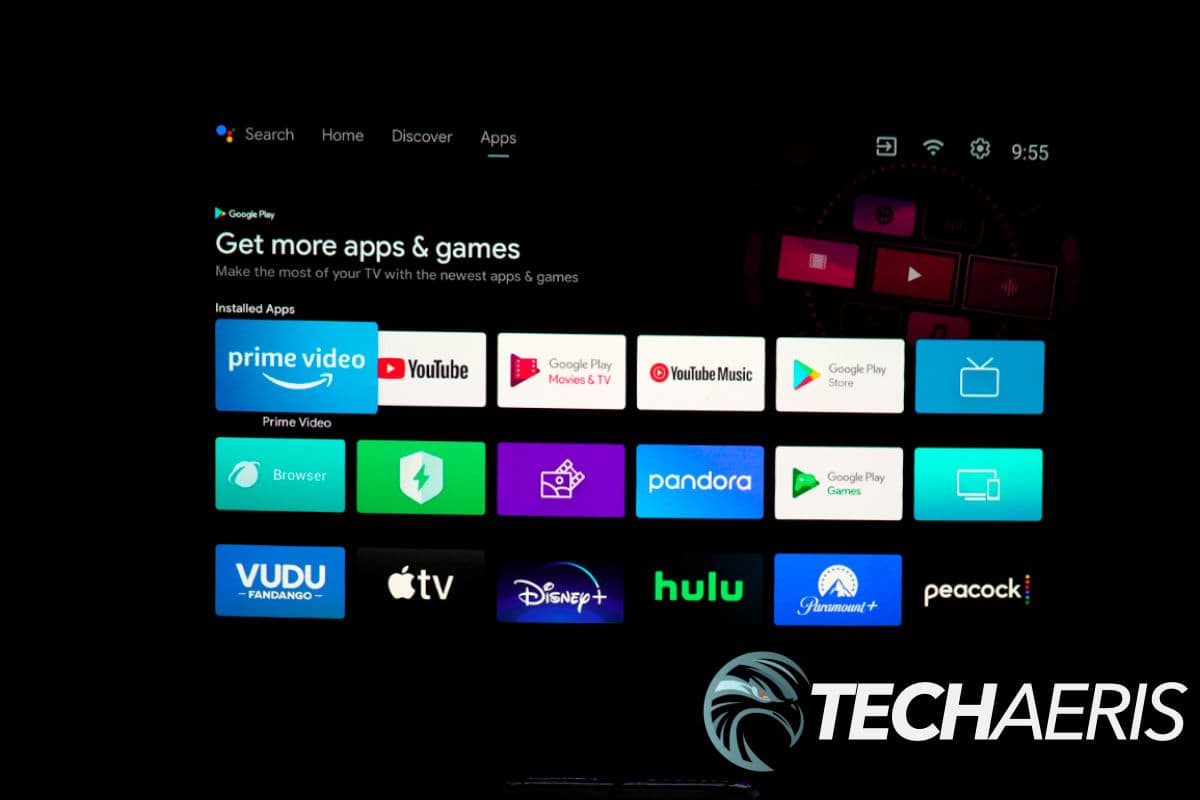
The Hisense PX1 runs Android TV software. I’ve never been a fan of Android TV or Google TV. It’s not as smooth or well-designed as Apple’s Apple TV.
Android TV has made some improvements; still, I’m not too fond of the advertising that comes with this software. As for usability, it’s okay; it works. Even if you don’t use the interface to consume content, you will need to use it for your Inputs and TV settings.
That portion of the interface, the settings, is excellent. It’s simple and well laid out, and everything is easily adjustable. Once I had all my settings dialed in and stopped using Android TV, I moved over to my Apple TV, and all worked great.
Overall, Android TV is fine if that’s the route you want to go. The menu and settings interface works fine and everything is easy to find. Android TV has all the same offerings as any other TV service, so it’s fine to use. One benefit of using the built-in Android TV interface is that it frees up an HDMI port, if you were to not use an alternative streaming box.
Performance
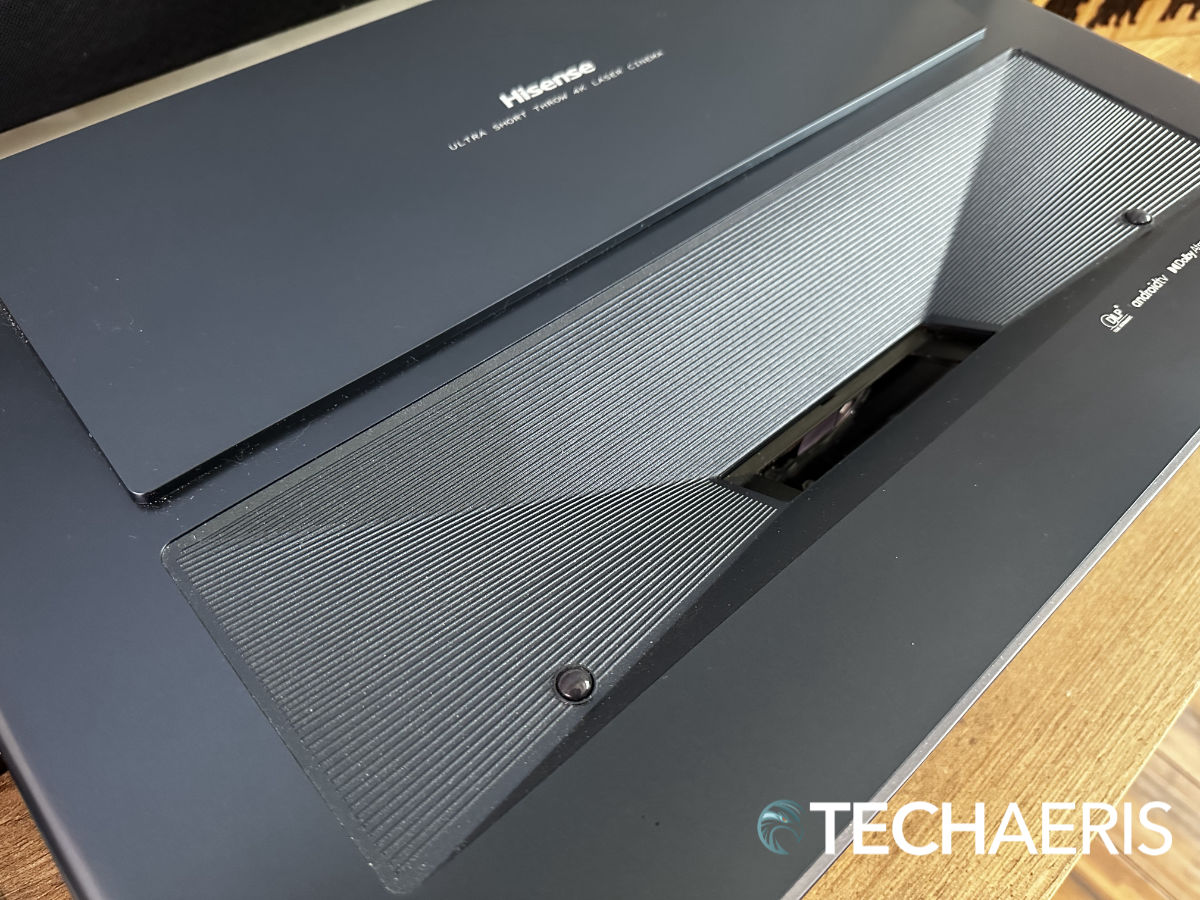
I remember fan noise being one of my concerns with the L9G, and my initial thought was that the Hisense PX1 would be louder because of its more affordable price point. I was happy to find out that the PX1 is no louder than the L9G and the fan noise is not noticeable at all, especially when watching with a good soundbar with the volume set at a comfortable listening level.
Internally, you will find a three-laser light source that implements independent red, blue, and green lasers to project that brilliant 4K image on the ALR screen. The PX1 outputs as much as 107% of the BT.2020 color space, and Hisense rates its laser light source at 25K hours.
The Hisense PX1 outputs 2,000 lumens, which is less than the L9G and where I had the biggest issue. The L9G has Wi-Fi 5 and a Gigabit Ethernet port; I chose to hard-wire mine. The two HDMI ports are great, but I would have liked to have seen four. At least one supports eARC for soundbars, so there is that. The proximity sensors for turning the lasers off are a bit annoying if one gets too close, but I understand the safety behind them.
There are things like motion smoothing and other software settings that you can change to improve the end quality. I recommend poking around the settings for a reasonable amount of time to dial in the picture the way you want them and what looks good to your eyes.
Gaming performance is OK, but not great for darker games, as I struggled to make some things out on the screen.
Overall, the performance of the Hisense PX1 is generally OK, for its price point. My biggest beef is the brightness, 2,000 lumens just was not enough for me.
Sound Quality
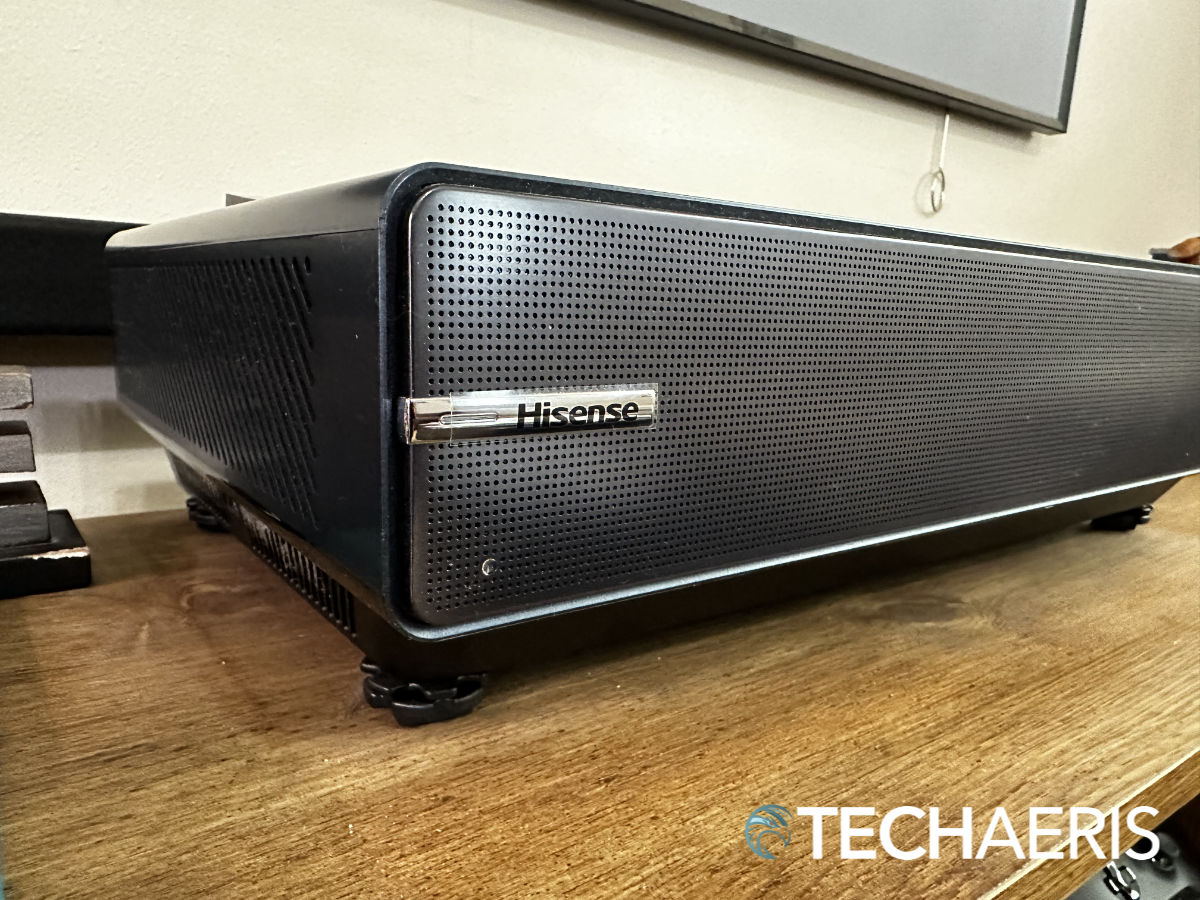
The sound quality of the Hisense PX1 is not great. The unit has two 15W speakers, which is significantly lower than the L9G’s two 40W speakers. The sound is thin, and I recommend a soundbar with this projector.
Price/Value
The Hisense PX1 will set you back just over $3,000 without the ALR screen. There is value here for first time projector buyers and with some work and time spent setting up, you should have a good experience. As of this review, you can get the PX1 on Amazon for $1875, which is a great deal.
Wrap Up
The PX1 is a nice projector, but I recommend the PX1 Pro or the L9G as options if you have the extra money to put into them. Those projectors will deliver better brightness and better overall color and performance. Still, the Hisense PX1 is a nice projector to get yourself into this world.
Hisense PX1
$3,297Nailed it
- Reasonable price point
- Offers up to 120" screen size
- Android TV has improved
- Size and weight make it portable
- Good 4K picture quality for this price point
- Fans are quiet and the unit runs smooth
Needs work
- Fixed focal length
- Setup can be frustrating
- Brightness levels aren't as good as some of Hisense's other offerings
- Colors could be better, not as good as the L9G
- Dark content can be hard to see in a very bright sunlit room
- Speakers are thin
In some of our articles and especially in our reviews, you will find Amazon or other affiliate links. As Amazon Associates, we earn from qualifying purchases. Any other purchases you make through these links often result in a small amount being earned for the site and/or our writers. Techaeris often covers brand press releases. Doing this does not constitute an endorsement of any product or service by Techaeris. We provide the press release information for our audience to be informed and make their own decision on a purchase or not. Only our reviews are an endorsement or lack thereof. For more information, you can read our full disclaimer.
Last Updated on March 13, 2024.

